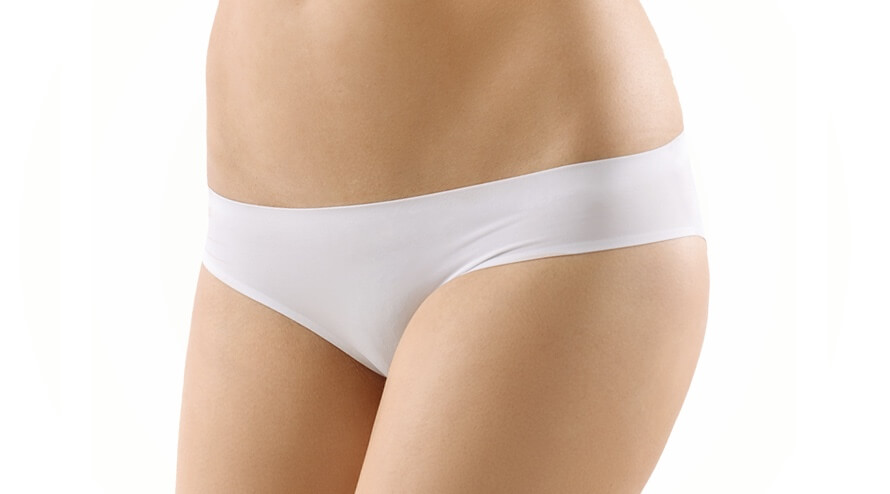
Urine Incontinence Treatment in Wroclaw, Poland – Nowa Estetyka Medical Center
Stress urinary incontinence causes involuntary urine leakage during physical exertion and exercise, as well as when sneezing, coughing, or laughing. The direct cause is an increase in abdominal pressure. In severe cases, even minimal physical activity like walking causes urine leakage. It is estimated that stress urinary incontinence accounts for about half of diagnosed cases. Women are much more frequently affected. The cause is the weakening of the pelvic floor muscles, ligaments, and fascia, which help keep the bladder in the correct position. Stress urinary incontinence often affects women who have given birth multiple times naturally and those in menopause. A lowered level of estrogen, which affects receptors located in the urethra, and the progressive weakening of muscles with age can lead to a weakening of the urethral sphincter. Surgeries like gynecological operations can also cause incontinence. Obesity increases the risk of the condition.
Involuntary urination in adults may also be caused by an overactive bladder (detrusor muscle) or reduced ability of the bladder walls to stretch. The patient then experiences frequent and sudden urges to urinate. For overactive bladder, botulinum toxin treatment is used. The preparation is injected directly into the bladder. The toxin reduces the overactivity of the urethral detrusor, thus preventing urine leakage.
Cases where there are multiple causes for the condition (mixed incontinence) are often seen. Involuntary urine leakage can also be a symptom of coexisting conditions and congenital defects of the reproductive system, such as uterine prolapse and fistulas.
Urinary incontinence treatment for women at Nowa Estetyka Medical Center includes laser procedures as preparation before surgical treatment, as well as qualification for surgical treatment with the TOT (Trans-Obturator Tape) sling, performed in the safety of an operating theater.
Laser Urinary Incontinence Treatment Wrocław
Laser treatment for urinary incontinence involves introducing a light beam into the area of the front vaginal wall and photothermal treatment of tissues near the urethral opening. The laser strengthens and stiffens the vaginal wall and restores the correct position of the urethra, supporting normal urinary system function.
Laser treatment is currently the safest and least invasive method for treating stress urinary incontinence. Laser correction takes about 30 minutes and is painless. No anesthesia is used for the procedure. Involuntary urination should cease approximately one month after the procedure. In most cases, one procedure leads to complete recovery, though depending on the severity or recurrence of the issue, the procedure can be repeated.
An additional effect of laser correction is increased collagen fiber synthesis, which helps maintain proper moisture and pH levels in the vagina. Therefore, the procedure also alleviates symptoms associated with urinary incontinence, such as recurring bladder infections and itching.
| Procedure duration | about 30 minutes |
| When are results visible? | within a month after the procedure |
| Recovery time | 2 weeks |
| Anesthesia | none |
| Number of procedures | just one procedure provides satisfactory results |
Urinary Incontinence Treatment – TOT Sling
A thin, synthetic tape inserted through the vaginal wall under the urethra supports the neck of the bladder. The procedure requires small incisions in the groin area, from where the ends of the tape are pulled out and sewn under the skin so that they are not visible.
The TOT sling method is considered minimally invasive but highly effective. The procedure is performed under local or spinal anesthesia in the safety of an operating theater.
The TOT method is more invasive than laser urinary incontinence treatment, but the procedure itself is short. Before the TOT procedure, laboratory tests and blood typing are required.
The recovery period lasts from 2 to 6 weeks, but the first effects are noticeable after 2-3 days. Sometimes, the patient notices improvement in urine retention only after about 2 weeks.
The TOT procedure improves urine retention for about 10 years. In cases of progressive weakening of the muscles and ligaments, the procedure can be repeated.
| Procedure duration | 60 minutes |
| When are results visible? | Immediately after the procedure |
| Recovery time | 2-6 weeks, recommended follow-up visits (the first – 7 days after the procedure) |
| Anesthesia | local, spinal |
| Number of procedures | 1 |
TOT Sling – Recommendations and Recovery After the Procedure
At least one follow-up visit is recommended 7 days after the procedure. A blood-stained discharge is a normal symptom of wound healing.
After the TOT procedure, the patient should lead a calm lifestyle, avoiding lifting, training, and intense physical exertion for at least 4 weeks. Muscle strain in the pelvic floor should be avoided, as this could damage the tape placement. The patient returns to full fitness after 4-6 weeks. During this time, avoid baths, saunas, and swimming pools. Regular activities should be resumed gradually, slowly increasing the intensity and duration. The incision in the vaginal wall heals within 6 weeks; during this time, traditional intercourse should be avoided.
Care should be taken with wound hygiene after the needle punctures, and antiseptic preparation should be used regularly. The procedure does not involve significant pain during recovery. Over-the-counter pain relievers can be used if necessary.
For patients prone to constipation, preventive medications that regulate bowel movements (e.g., lactulose) are recommended. Until healing is complete, it is especially important to maintain good health. Coughing and sneezing can cause issues with the tape’s placement until it is fully integrated into the tissue.